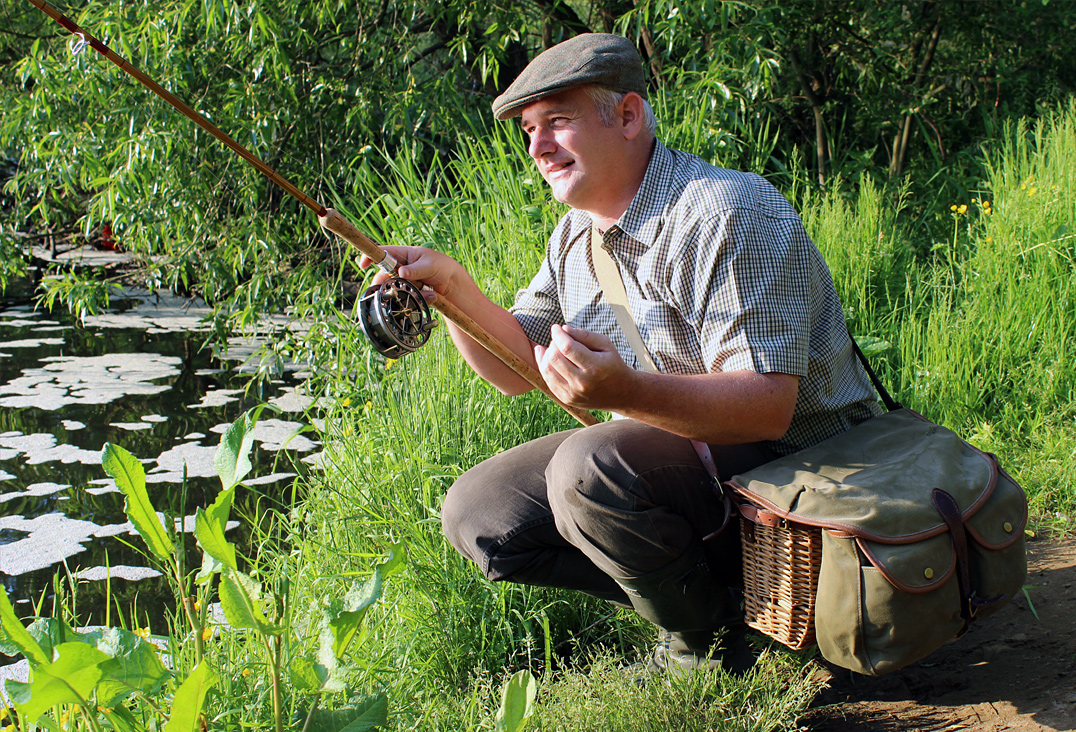An idiots guide to casting with a centrepin reel
I must be an idiot because it took me two seasons to learn how to perform this mystic task. If you think about it I had to learn because I make pin reels. I can do an average standard side Wallis cast but I find my trajectory is all over the place, so the cast I’m going or trying to explain is called the underarm Sheringham Wallis cast. Complicated? No, it’s as easy as swinging the lead believe me – remember I’m an idiot.
This is a very good cast for tight swims because you point the rod where you want the bait to land. This cast is also very good in the dark. Pick out a feature at dusk and cast to it after dark, an average cast is about 20 yards so your bait is going to land in the same place every time – that’s the plan anyway.
The underarm Sheringham Wallis cast explained
First of all, you need a very soft line with little or no memory. A through action rod, stiff rods will not load the lead correctly. The Wallis grip is behind the reel with your thumb on the batting rim. Step one, hold the rod level with the water. Lay the lead, not the hook across your fingers of your left hand (I’m right-handed) keep both hands together at the reel. Keep your thumb on the batting rim, close your fingers over the lead now turn your lead hand over, extend your thumb and place it into the line coming from the bottom of the reel. NB Do not use line guards with this cast. With your lead hand put a slight tension on the rod tip. Dip the rod to the ground both hands, now lift the rod to 45° but keep your lead hand still, open hand but keep your thumb in the reel line. The rod will swing the lead out of your hand, out over the water. By keeping your lead hand still, your thumb will start the reel spinning by pulling the line.
Halfway through the cast start to lower the rod and start to feather the batt rim to slow the reel down. NB. Don’t forget to stop the reel at the end of the cast or it will overrun. As you stop the reel bring your lead hand up past the real to your butt ring. This will stop the final jerk when you stop the reel and put any spare line back on the reel. At the butt ring, the line will be in the ‘V’ of your thumb.
Want to cast further?
Still awake? Good! Now to gain a greater distance. As you lift the rod take your lead hand down to your knee, the real will spin faster so the lead will travel further. At the end of the cast, the rod must be level with the water again. You should practice, so take a bucket up to the park and place it 20 yards away, when you can hit it consistently go home. If anybody asks you what you are doing tell them you are fishing for grass carp.
To re-cap don’t forget to stop the reel. Practice this cast in slow motion to see what is actually happening. Don’t try to run before you can walk, cast too fast and the lead won’t go out over the water, it will go straight up in the air and hit you on the head. Don’t use braid at first as it will tangle terribly. This method is all a matter of timing, start slowly and your timing will come – best of luck.
Chris Lythe Grand Masters certificate
A cautionary note about the effects of alcohol on the Wallis cast, too much will ruin your timing. I recall one late night on the river Wharfe with too many pots on board I had three unbelievable birds nests, big enough to house an Albatross! But I did manage to finally land a very splendid 7lb 2oz Barbel. This swim is now called the blood knot, if you can cast the lead into the bucket I will send you a Grand Masters certificate.


